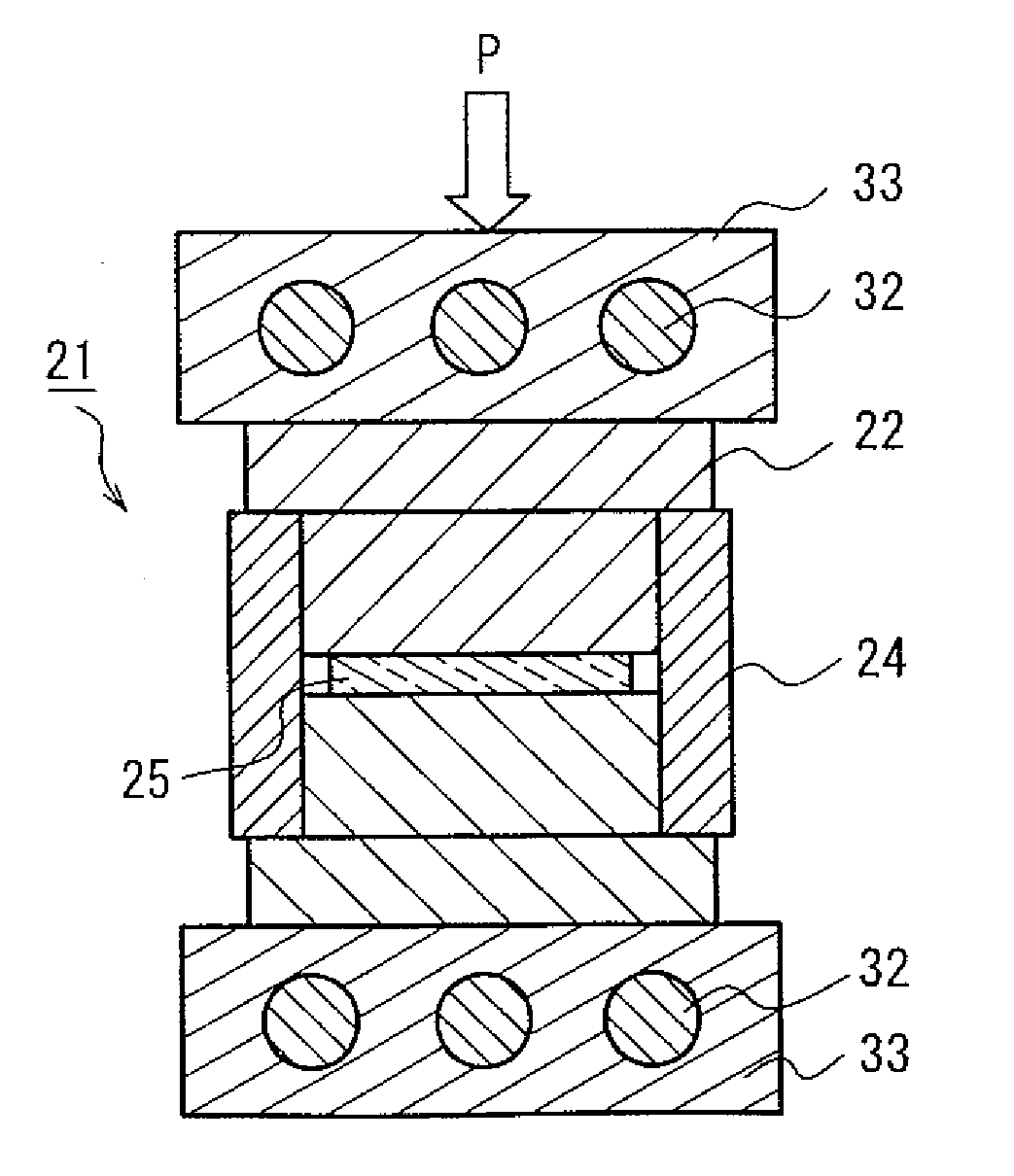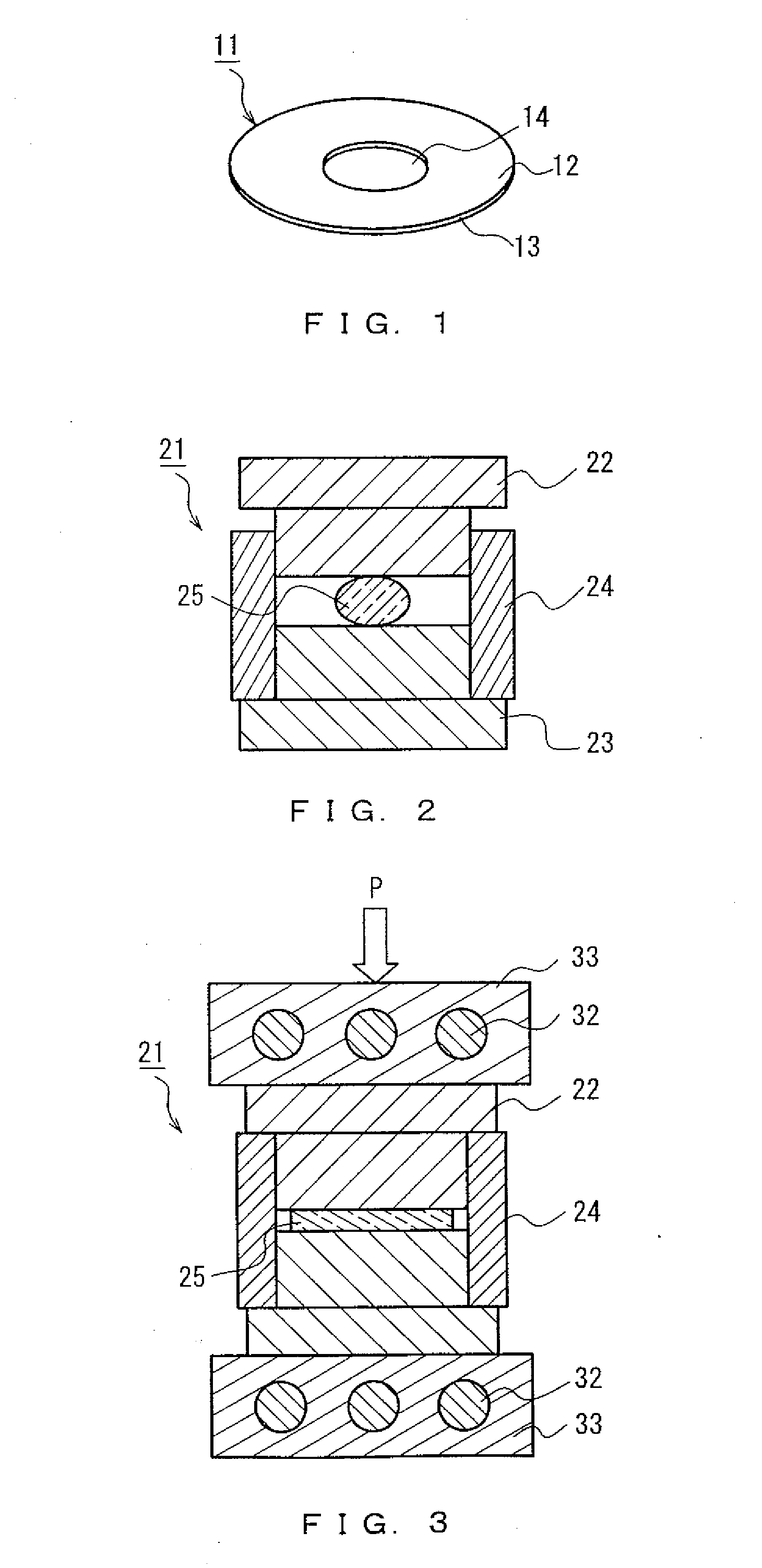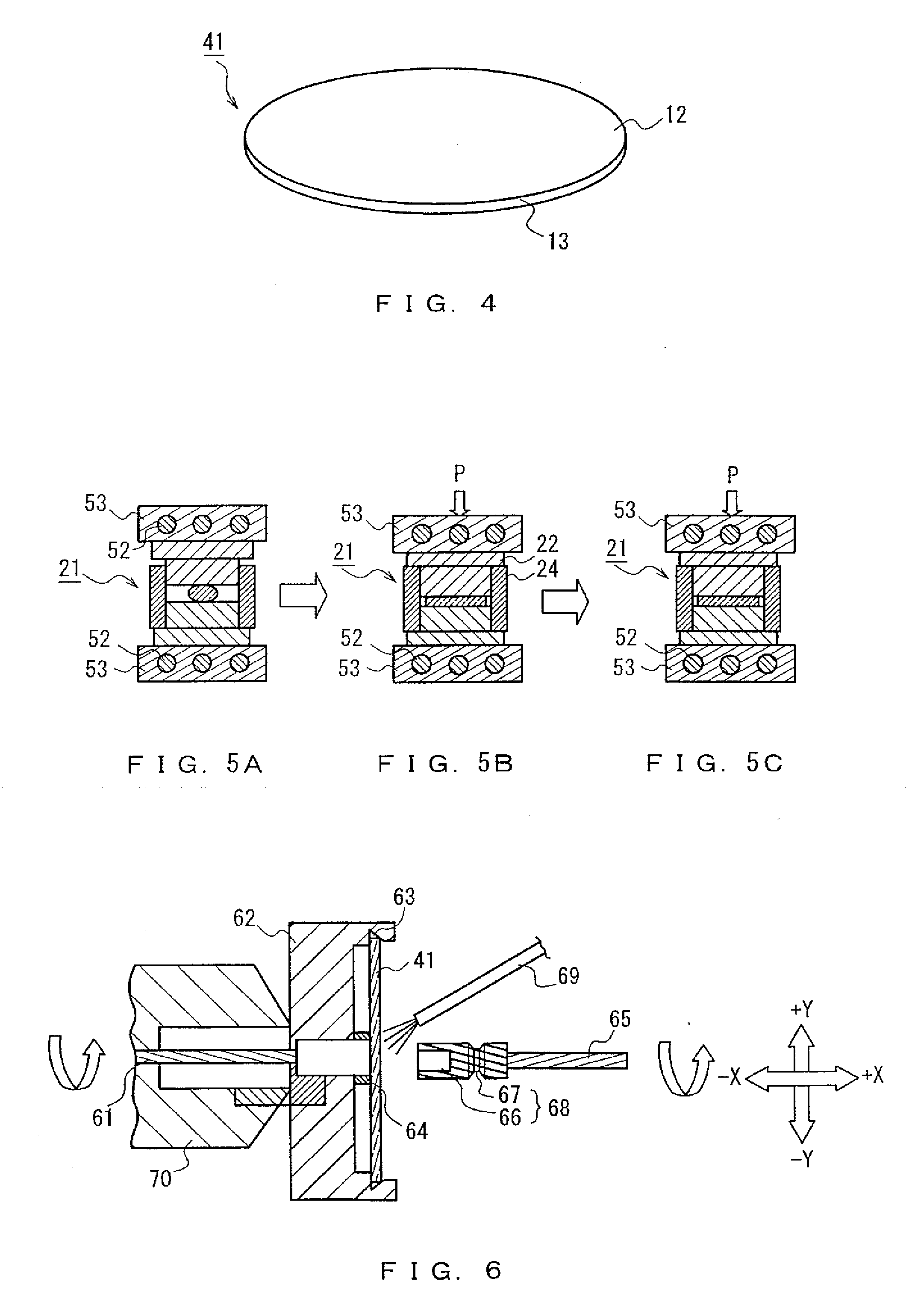Molded glass substrate for magnetic disk and method for manufacturing the same
a technology of magnetic disks and molded glass, which is applied in the direction of manufacturing tools, instruments, transportation and packaging, etc., can solve the problems of limiting the effort to reduce costs, requiring a lot of time for heating and cooling, and a large amount of industrial waste, so as to reduce industrial waste, eliminate the need for chamfering, and suppress the generation of dust
- Summary
- Abstract
- Description
- Claims
- Application Information
AI Technical Summary
Benefits of technology
Problems solved by technology
Method used
Image
Examples
embodiment 1
[0042] Hereinafter, a molded glass substrate for a magnetic disk of Embodiment 1 of the present invention will be described with reference to FIG. 1, and press-molding and processing methods for producing the molded glass substrate will be described with reference to FIGS. 2, 3, 4, and 5A to 5C.
[0043]FIG. 1 shows a molded glass substrate 11 for a magnetic disk, including principal surfaces 12, a molding-free face 13, and an inner surface 14: the principal surfaces 12 are formed on both sides of the substrate by precise press-molding; the molding-free face 13 is the outer surface joined to the principal surfaces; and the inner surface 14 is formed by precise machining.
[0044] The precisely processed surfaces of a molding die are transcribed faithfully onto the principal surfaces 12. The molding-free face 13 is not controlled by the processed surfaces of dies during molding. In general, the inner and outer circumferences of a magnetic disk glass substrate are ground and chamfered, an...
embodiment 2
[0047] The schematic configurations of a molding die and a molding apparatus will be described with reference to FIGS. 2, 3, and 4. L In FIG. 2, a molding block 21 includes an upper die 22, a lower die 23, and a barrel die 24. Each of the upper and lower dies 22, 23 has a molding face that is processed precisely to have a desired mirror-finished surface. The barrel die 24 guides the upper and lower dies in a slidable fashion. A glass material 25 is placed in a space between the upper, lower, and barrel dies.
[0048]FIG. 3 shows the schematic configuration of a press-molding apparatus 31 that heats the entire molding block 21. The press-molding apparatus 31 includes upper and lower heating plates 33 arranged above and under the molding block 21, each heating plate containing a heater 32, and a mechanism for applying pressure via the upper heating plate 33, which is not shown and indicated by the arrow P in FIG. 3. Except for the pressurizing mechanism, the upper and lower heating plat...
embodiment 3
[0053] Next, to obtain the molded glass substrate for a magnetic disk of Embodiment 1 of the present invention shown in FIG. 1, the concept of a press-molding method different from the above method will be described with reference to FIG. 5 so that the molded glass substrate 41 can be produced.
[0054]FIG. 5A shows a preheating step: a molding block 21 similar to that in FIG. 2 is preheated throughout with upper and lower heating plates 53, each of which is heated at a steady temperature and controlled by a heater 52, while the molding block 21 is kept waiting for a certain time. Then, the molding block 21 is conveyed to a transforming step shown in FIG. 5B. In the transforming step, a pressurizing mechanism (not shown) applies pressure P so as to transform a glass material 25, and the transformation is completed when an upper die 22 comes into contact with a barrel die 24 in the same manner as shown in FIG. 3. In FIG. 5C, a cooling step is performed with the application of pressure ...
PUM
| Property | Measurement | Unit |
|---|---|---|
| Nanoscale particle size | aaaaa | aaaaa |
| Temperature | aaaaa | aaaaa |
| Pressure | aaaaa | aaaaa |
Abstract
Description
Claims
Application Information
 Login to View More
Login to View More - R&D
- Intellectual Property
- Life Sciences
- Materials
- Tech Scout
- Unparalleled Data Quality
- Higher Quality Content
- 60% Fewer Hallucinations
Browse by: Latest US Patents, China's latest patents, Technical Efficacy Thesaurus, Application Domain, Technology Topic, Popular Technical Reports.
© 2025 PatSnap. All rights reserved.Legal|Privacy policy|Modern Slavery Act Transparency Statement|Sitemap|About US| Contact US: help@patsnap.com



